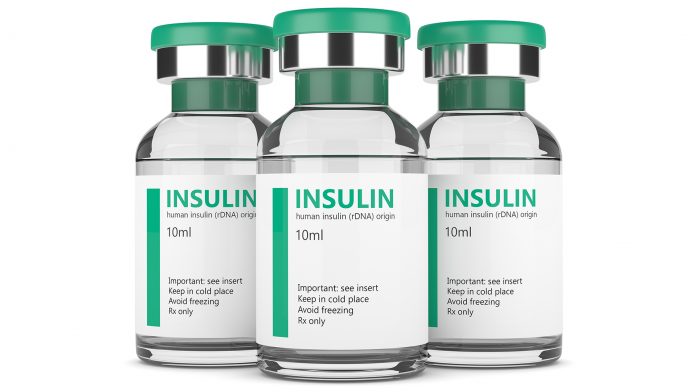
The development of a new prototype insulin patch may revolutionise the future of treatment for diabetes, providing an alternative approach for administering the life-saving drug.
Currently, methods for regulating blood sugar levels for people with diabetes require round-the-clock attention, meaning more efficient strategies for managing levels would be a welcome addition for people with the condition. Although a healthy diet and increased physical activity can alleviate this burden, the majority of people with diabetes require regular shots of insulin – the primary hormone that regulates sugar. Now, scientists have created a prototype insulin patch that sticks comfortably inside a person’s cheek to deliver the drug.
The research is published in ACS Applied Bio Materials.
Diabetes care
The American Diabetes Association estimates that around six million Americans are currently employing insulin to manage their diabetes – either due to their bodies not producing enough of the hormone (Type 1 diabetes), or they do not respond well to what they make (Type 2 diabetes).
Traditionally, people administer their insulin by injecting themselves with pens, syringes or having semi-permanent pumps implanted. Many people find these methods invasive and uncomfortable, requiring a safe needle or biohazard disposal and sterile conditions. To combat these drawbacks, the team investigated ways to deliver insulin through the skin, with things such as gel-like lotions; however, the skin is too strong of a barrier, and drugs move slowly into the body.
Contrastingly, the membrane lining inside the mouth is very thin – around 25% the thickness of skin – meaning it may be the perfect entry point for drugs to enter the bloodstream. To investigate this, the team tested whether a material they previously developed, a polymer fibre mat that releases drugs when activated by heat, could deliver insulin when attached to the inside of cheeks.
Insulin patch innovation
To develop their insulin patch, the team soaked small squares of a nanofibre mat made from electrospun fibres of acrylic acid, β-cyclodextrin, and reduced graphene oxide, in an insulin solution for three hours.
Next, the researchers administered the insulin patch in the cheek linings and corneas of pigs. When the material was heated with a near-infrared laser for ten minutes to 122°F, it became activated and released insulin into the two types of membranes several times faster than through the skin.
Subsequently, the team applied the insulin patch in vivo inside the cheeks of three insulin-dependent pigs; their cheek linings displayed no irritation or visual changes from the laser’s heat. When the material was activated, the blood sugar level of the pigs was reduced. Moreover, the pigs’ plasma insulin levels increased, suggesting that the insulin patch is proficient at transporting insulin into the bloodstream.
Finally, the team tested a placebo version of their patch in six human volunteers, who reported that it felt comfortable over a two-hour period. The next step is to perform further tests of the prototype on animal models.
The project received funding from Centre National de la Recherche Scientifique (CNRS) of France, the University of Lille, the i-SITE foundation of the University of Lille, the Hauts-de-France region, the CPER “Photonics for Society”, and the European Union’s Horizon 2020 Research and Innovation Staff Exchange (RISE) Marie Skłodowska-Curie Actions.






















